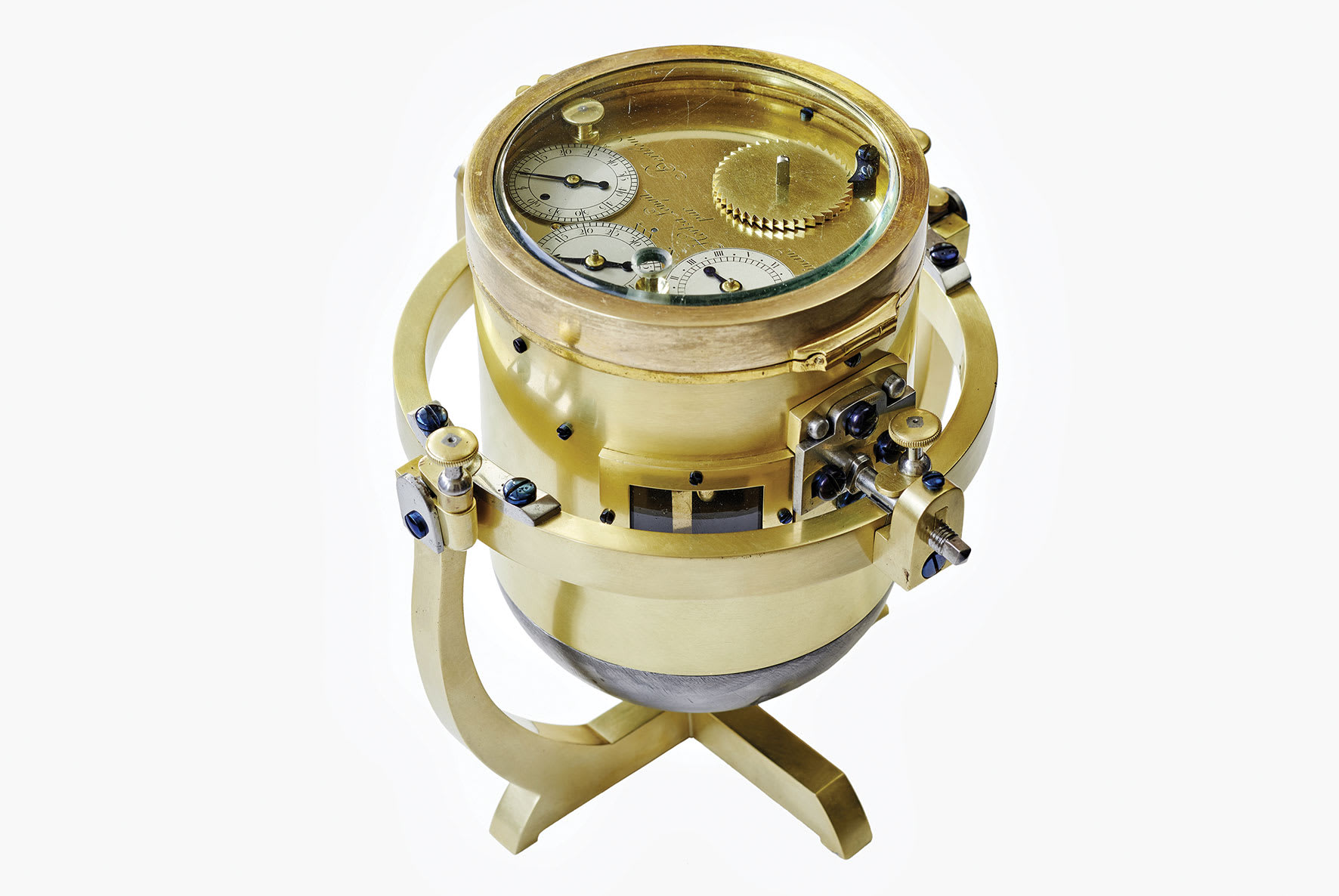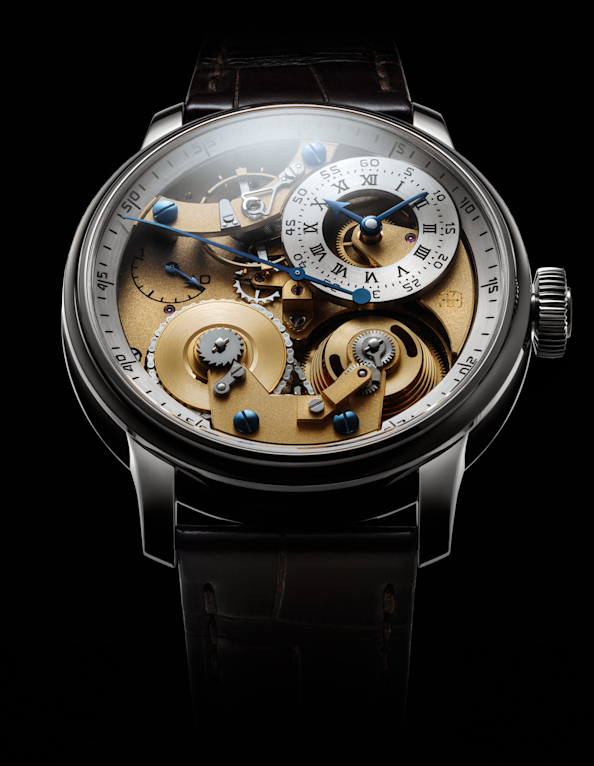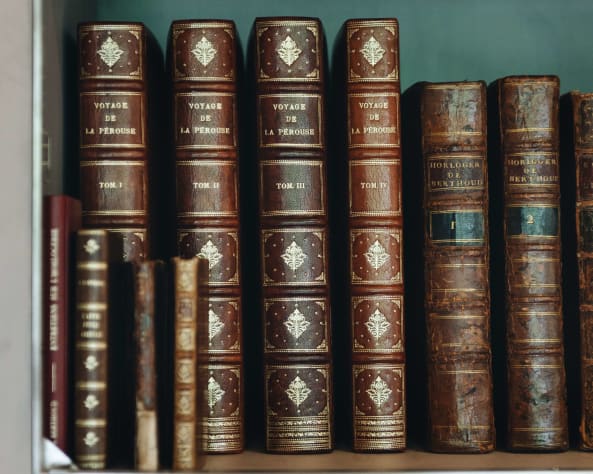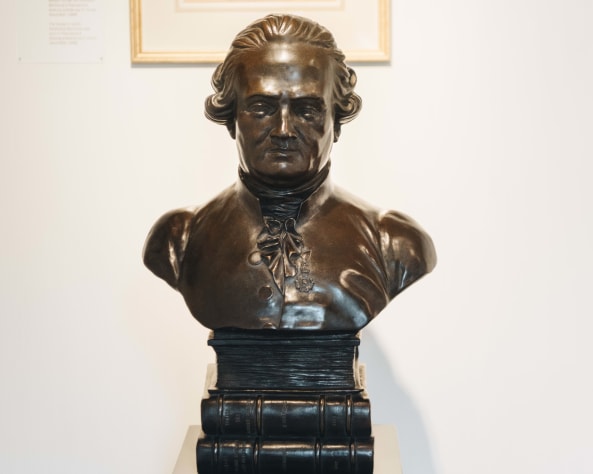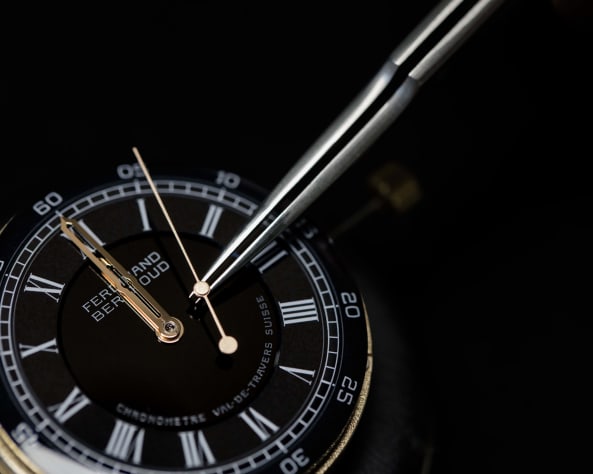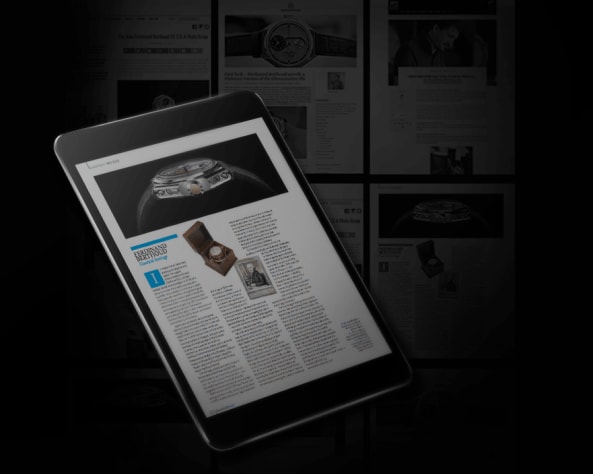




Ferdinand Berthoud opened his Traité des Montres à Longitudes[1], published in 1792, with a description of a vertical watch. Produced two years earlier, this newly developed timepiece was the first in a series featuring a vertically-positioned dial.
A portable timepiece, on sea and on land
Around 1785, Ferdinand Berthoud worked on the design of a portable and modestly sized timepiece suited to various uses. Placed on its gimbal suspension system and housed in its dedicated box, it was used during navigation at sea and land travel by car. Moreover, it could "if necessary be carried by the observer, either on land or on the deck [of the ship]: this inevitably implied that the position of these machines becomes vertical, whether it is carried in the pocket of the jacket or otherwise […]”[2], such as worn on a long cord around the neck. Once repositioned on its suspension device, this astronomical timepiece could also take its place on a table or mantlepiece.
Since they could not serve as a unique point of reference for ships, vertical watches were intended to accompany clocks with horizontal longitudes. Berthoud created several evolved versions, striving to reduce their production cost so as make them accessible to a greater number of sailors.
Vertical longitude watch No. 64
Preserved in the L.U.C.EUM collections, the vertical portable timepiece No. 64 brilliantly illustrates this segment of Ferdinand Berthoud's production and is mentioned in the Suite du Traité des Montres à Longitudes [3], a book in which the watchmaker explains the evolution of his longitude watches, number by number.
Endowed with a 35-hour power reserve, its mechanism beating the seconds comprises a fusee equipped with a gut string, four wheels including the pivoted-detent escape-wheel, as well as a balance maintained by three runners. According to Berthoud, this type of vertical watch "owes its accuracy to the nature of its principles and the simplicity of its composition”. [4]
Jean Martin, talent and craftsmanship
Ferdinand Berthoud presents the man behind this timepiece as follows: "Jean Martin was born in my house in Groslay in 1773. When he reached the age of 13, after working for some time under one of my employees, I recognized his skill and intelligence. Consequently, I resolved to train him for the watchmaking industry and to send him to serve his apprenticeship with Mr. Vincent Martin[5], at that time clockmaker by appointment the French Navy in Brest [...].”[6]
Returning to Groslay in 1793, Jean Martin made several watches and longitude clocks under Berthoud's supervision, including this model 1795. That same year, Ferdinand Berthoud was elected a member of the newly founded National Institute, within the Mechanical Arts section.
Captions
1. Figure 1 of this engraved plate, taken from Ferdinand Berthoud's Suite du Traité des montres à longitudes (Paris: Imprimerie de Baudelot et Eberhart, 1797, plate II, continuation), reproduces watch No. 60, representative of Berthoud's series of vertical portable timepieces
2. Ferdinand Berthoud, vertical longitude watch No. 64, 1795, overall view (L.U.CEUM collection, Fleurier). Dimensions: Height 15.8 cm, Width 9.5 cm, Depth 8.5 cm, Watch diameter 6.5 cm, Watch thickness 3.8 cm.
3. Ferdinand Berthoud, vertical longitude watch No. 64, 1795. Timepiece removed from its suspension system, dial bearing the engraved inscription "N.° 64 / F.d Berthoud Inv.e / J.n Martin Exéc.e 1795".
4. Ferdinand Berthoud, vertical longitude watch No. 64, 1795. Rear view showing the thermal compensation system with two composite blades (steel and brass) that act directly on the active length of the balance spring.
5. Ferdinand Berthoud, vertical longitude watch No. 64, 1795. View of the mechanism between the plates, from the fusee side.
[1] Ferdinand Berthoud, Suite du Traité des montres à longitudes, Paris: Imprimerie de Baudelot et Eberhart, 1797, Chapter 1, pp. 1-2.
[2] Ferdinand Berthoud, Suite du Traité des montres à longitudes, Paris: Imprimerie de Baudelot et Eberhart, 1797, Chapter 1, pp. 1-2.
[3] Berthoud, Suite du Traité des montres à longitudes (ref. in note 2), p. 34.
[4] Ferdinand Berthoud, Supplément au Traité des Montres à Longitudes, Paris: Imprimerie de J.-M. Eberhart, 1807, "Avertissement de l'auteur".
[5] A student and subsequently an employee of Ferdinand Berthoud, Vincent Martin produced various timepieces under the supervision of his mentor, including the first vertical longitude watch, bearing No. 46. To this day, there is no evidence of him having any family ties with Jean Martin.
[6] Berthoud, Supplément au Traité des montres à longitudes (ref. in note 4), p. 30, note 21.
Next article
Longitude clocks
